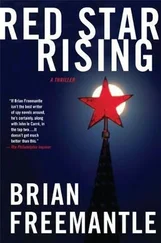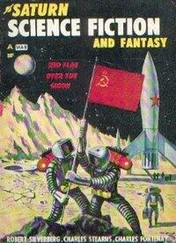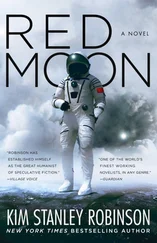With several combustion chambers fully assembled, the Russians had solved part of the reverse-engineering puzzle. But twenty thousand separate parts went into each V-2, and correctly putting the remaining pieces together into an operational guided missile was another matter. Even the scattered component parts initially had to be disassembled “down to the last screw,” Chertok recalled, so that detailed drawings could be made to glean a basic understanding of how they worked.
Maddeningly, for the Russians, more than one thousand qualified German engineers were just beyond reach in the American zone, across the Werra River. To make matters worse, the engineers had hidden all the assembly instructions—six truckloads of assorted owner’s manuals, including more than sixty thousand blueprint modification drawings—at the bottom of a mine, to be used as a bargaining chip with Toftoy, their new American benefactor. “These documents were of inestimable value,” recalled Dieter Huzel, one of the German scientists entrusted with concealing the trove. “Whoever inherited them would be able to start in rocketry at the point where we had left off, with the benefit of not only our accomplishments but of our mistakes as well.”
The B-team that Chertok was left with had neither the benefit of experience nor documentary guidance. It might have been numerically superior—by 1946 some six thousand Germans were on the Soviet payroll, resurrecting the V-2 program—but it consisted mostly of technicians, draftsmen, and lower-grade engineers whose knowledge rarely exceeded subassembly levels. What was missing from the Soviet effort were German scientists with knowledge of the big picture. And no amount of extra egg rations, tax-free salaries, bonuses, and bribes could entice stars of von Braun’s caliber from the American side. The one exception was Helmut Grottrup, von Braun’s deputy for electric systems and guidance control. Unfortunately for the Russians, he came in a package deal with the imperious Frau Grottrup, who viewed the Red Army as her personal catering service, right down to the show horses she demanded for the stables of the sprawling villa she had selected for her residence. Frau Grottrup fired cooks and assistants on a weekly basis, and the never-ending shopping list she presented to her husband’s astonished Soviet employers required the full-time attendance of a colonel. “My sister goes to university wearing men’s boots,” wrote one of Frau Grottrup’s indignant Russian minders. “She is selling her last dress to buy food for our sick mother. My young wife Tamara had to quit her studies because she can’t make it without my help—and here we are getting saddle horses!”
But Frau Grottrup got her horses, her BMW, a pair of cows for fresh milk, even her insistence on a Soviet officer as a riding companion. She got whatever she wanted because back in Moscow Stalin was furious that no other senior German scientists had come over to the Soviet side, and he was demanding that something be done. “We’d even hatched a plan to kidnap von Braun,” Chertok reminisced, but the abduction efforts proved amateurish, as one U.S. intelligence report recorded: “One day, a group of men in American Army uniforms entered the schoolhouse in Witzenhausen. They began a friendly conversation with several members of the team and suggested they all go into the village for a few drinks. However the Germans were suspicious of the English they spoke—it was neither American English nor British English. The Russians left without captives.”
What the Russians lacked in subtlety and senior scientists, they compensated for with an excess of Red Army zeal for pillage. As the Soviet-controlled part of Germany was systematically dismantled and shipped east, the crucial missing blueprints began turning up in the unlikeliest places: behind woodpiles, in toolsheds, in the homes of former factory directors, and in partially destroyed attics. Among the trove of documents, one set of plans particularly caught the Soviets’ attention. It was a proposal for the design of a far more powerful version of the V-2, the one-hundred-ton-thrust A-10, which was to have gone into development once Hitler’s European adversaries had been vanquished. The A-10 was a long-range two-stage rocket that had one purpose: to strike New York and Washington.
In Moscow, where the notion of a new war, a cold one, was already taking shape, Stalin himself quickly seized upon the idea of the A-10. “It would be an effective straitjacket for that noisy shopkeeper, Harry Truman,” he advised his top officials. “We must go ahead with it, comrades. The problem of the creation of transatlantic rockets is of extreme importance to us.”
February 27, 1956
One after another, the big ZIS limousines pulled away from the curb. Black and burly, their whitewall tires not yet soiled by slush, the armored behemoths glided gently through the snow—three-and-a-half-ton dancers in a synchronized automotive ballet.
From Central Committee headquarters on Staraya Square, the chrome-fendered procession headed east past Gorki Street and slipped under the shadow of one of the Gothic skyscrapers that Stalin had ordered built after the war. Seven of the sinister high-rises dominated the Moscow skyline, and they rose in stone layers like fifty-story wedding cakes decked in dark granite icing. On the Ring Road, another Stalinist creation, an eight-lane motorway that surrounded the city center in an asphalt moat, the dozen limousines and chase cars turned north, breezing past block after block of leviathan government buildings that heralded the new Moscow.
The old mercantile city had been branded with Stalin’s indelible stamp; it was now a metropolis of bronze bas-reliefs of giant steelworkers with bulging forearms, of cast-iron tributes to collective farmers brandishing sixteen-foot scythes, of statues of Lenin six stories high. Monumental and monochromatic public works had risen on the trampled foundations of prerevolutionary pastel palaces. The gilded cathedrals of old were gone—ripped down or buried under layers of soot—and in their stead rose hulking cement fortresses whose towering porticos paid architectural tribute to the insignificance of the individual in the one-party state. Red banners hailing the Twentieth Party Congress draped the gray edifices, though the plenum had ended tumultuously two days before. GLORY TO THE WORKERS, they proclaimed. PEACE TO THE PROLETARIAT. Beneath the propaganda placards, long lines of shoppers formed outside food stores, their breath steaming in the cold, while elderly women in fingerless gloves swept dirty snow from the sidewalks.
If Nikita Khrushchev noticed any incongruity between the lofty slogans and the harsh socialist reality of Moscow street-corner life, he said nothing to his driver, or to his son, Sergei, sitting beside him in the backseat. He had said more than enough at the Twentieth Congress, and although six weeks would pass before the Central Intelligence Agency got wind of his secret speech, the Americans would be just as stunned as the 1,500 shocked delegates who had heard him in the Great Kremlin Palace less than forty-eight hours earlier.
Father and son sat in silence, behind the ZIS’s pleated curtains, watching the city stream drably past. Directly behind them, in the lane reserved exclusively for party high-ups, rode the three other Presidium members who had jointly ruled Russia since Stalin’s death three years earlier: Nikolai Bulganin, Lazar Kaganovich, and Vyacheslav Molotov. Behind them, in descending order of importance, rode lesser officials in less imposing ZIMs and Pobedas: Dmitri Ustinov, the armaments minister; Aleksei Kirichenko, a new addition to the Presidium; and the usual entourage of KGB bodyguards and eager aides.
Читать дальше












